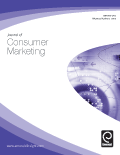In 2007 I was recruited to pen a chapter for The Silver Market Phenomenon Edited By Florian Kohlbacher and Cornelius Herstatt:
04 September 2008
Published: The Silver Market Phenomenon
28 June 2010
The Silver Market Phenomenon 2010: Update
… The current shift in demographics – aging and shrinking populations – in many countries around the world presents a major challenge to companies and societies alike. One particularly essential implication is the emergence and constant growth of the so-called “graying market” or “silver market”…
Last year I was again honored. Professor Kohlbacher asked me to fashion an Afterword for his newest co-written tome:
Advertising in the Aging Society
Understanding Representations, Practitioners, and Consumers in Japan
By Michael Prieler and Florian KohlbacherPopulation aging is a powerful megatrend affecting many countries around the world. This demographic shift has vast effects on societies, economies and businesses, and thus also for the advertising industry. Advertising in the Aging Society presents an insight into advertising practitioners and consumers in Japan.
Download The Flyer (PDF)
I’m serious. Download it.
The Authors: 
people,and has been published in numerous books and international journals.

Business School Suzhou (IBSS) at Xi'an Jiaotong
- Liverpool University (XJTLU) in Suzhou, China, and the Founding Director of the XJTLU Research Institute on Ageing and Society (RIAS). He is also an adjunct fellow at the Institute of Contemporary Asian Studies (ICAS) at Temple University, Japan Campus.
“Advertising in the Aging Society presents a refreshing and rare combination of theory-driven, data-rich research complete with clear implications for advertising practice. After analysis of nearly 3,000 television advertisements, 185 advertising practitioners’ survey responses, and 1,834 audience surveys, the authors provide insightful advice regarding the effects, effectiveness, and ethics of portraying silver citizens in advertising.
- Michelle R. Nelson, Associate Professor of Advertising University of Illinois at Urbana-Champaign

A snippet of the Afterword:
… During my international consulting in Europe and elsewhere, I always begin my presentations with a quote from American Political Scientist Seymour Lipset (1922-2006) culled from his book American Exceptionalism: “Those who know only one country, know no country.” Then I say to the participants, “Whatever I tell you today will be specific to the 50+ Market in the United States … Much of what I’ll say will not be relevant to you. What I hope will happen: As you watch and listen, every so often certain concepts, ideas, and practices will ring true – and you’ll know that what I’ve just said is more than likely a universal truth about advertising to this demographic. You will then be able to fashion marketing campaigns with a finely-tuned mix of country-specific and universal values.”
From my experiences hopping from country to country, I was surprised to be learning as much about my country as I was learning about other countries…
Back to The Flyer you should’ve downloaded:
"This is a very exciting book. Japanese advertising practitioners should listen carefully to Prieler and Kohlbacher's messages. They have implications for advertising around the world as population's aging is a global megatrend."
- Setsuo Sakamoto, Executive Producer, Institute of Elder Knowledge and New Adult Culture, HAKUHODO Inc.
Congratulations to Michael Prieler and Florian Kohlbacher. Advertising in the Aging Society is a major accomplishment.



![[crystal_ball_2.jpg]](https://blogger.googleusercontent.com/img/b/R29vZ2xl/AVvXsEiZLns-Q1Nt3LyLylKXa_91s8tWXzBqYhj7nIO7in0TLa4xw4d3R7wZfYJHME5EINVUXEQaGer084sajNtHn3p7CSadP2xdpF2wKid9sjSjs9sGEP__ZsHokbSRqsstgWwHo55ibA/s1600/crystal_ball_2.jpg)
 …And that’s what bothered me about the marketing – and still does. Are these new-fangled blinking lights on a screen the best way, the only way to keep your noggin nimble? This seems to be the claim. Or are they a new breed in a long line of cognitive games that go back to counting pebbles on a cave floor?
…And that’s what bothered me about the marketing – and still does. Are these new-fangled blinking lights on a screen the best way, the only way to keep your noggin nimble? This seems to be the claim. Or are they a new breed in a long line of cognitive games that go back to counting pebbles on a cave floor? …You certainly get the ‘hard-sell’ impression that if you don’t buy and play these games, eventually your brain will leak out of your nose and ears. Why not just tell the truth? These are high-tech, stimulating computer-generated exercises that will help keep your mind sharp - are structured, measurable to some degree (so they’re useful for medical research), and quite entertaining.
…You certainly get the ‘hard-sell’ impression that if you don’t buy and play these games, eventually your brain will leak out of your nose and ears. Why not just tell the truth? These are high-tech, stimulating computer-generated exercises that will help keep your mind sharp - are structured, measurable to some degree (so they’re useful for medical research), and quite entertaining. …Obviously I’m not qualified to comment on whether these digital gizmos revivify your rotting noggin. However, for years I’ve questioned why the hype was so thick. Did it have to be?
…Obviously I’m not qualified to comment on whether these digital gizmos revivify your rotting noggin. However, for years I’ve questioned why the hype was so thick. Did it have to be? What I didn’t foresee
What I didn’t foresee

 The Ugly, The Bad and The Good
The Ugly, The Bad and The Good Traipsing every which way:
Traipsing every which way: The most popular post of the year:
The most popular post of the year:
 … Most of the time we’re in slow motion. We float around the screen, dreamlike, as if drifting in a digitized aquarium.
… Most of the time we’re in slow motion. We float around the screen, dreamlike, as if drifting in a digitized aquarium.



 Brand loyalty almost always fades, and hasn’t made sense for decades.
Brand loyalty almost always fades, and hasn’t made sense for decades.  Hire Baby Boomer Creatives
Hire Baby Boomer Creatives You nailed it Chuck! My reaction (albeit with an agency skew) is that these spots are targeting BOOMERS, but written by 20-somethings? … Young creatives (are there really any other kind?) can't write to BOOMERS…so they write to please themselves. As a BOOMER many of us see right through this common occurrence.
You nailed it Chuck! My reaction (albeit with an agency skew) is that these spots are targeting BOOMERS, but written by 20-somethings? … Young creatives (are there really any other kind?) can't write to BOOMERS…so they write to please themselves. As a BOOMER many of us see right through this common occurrence. 03 October 2005
03 October 2005